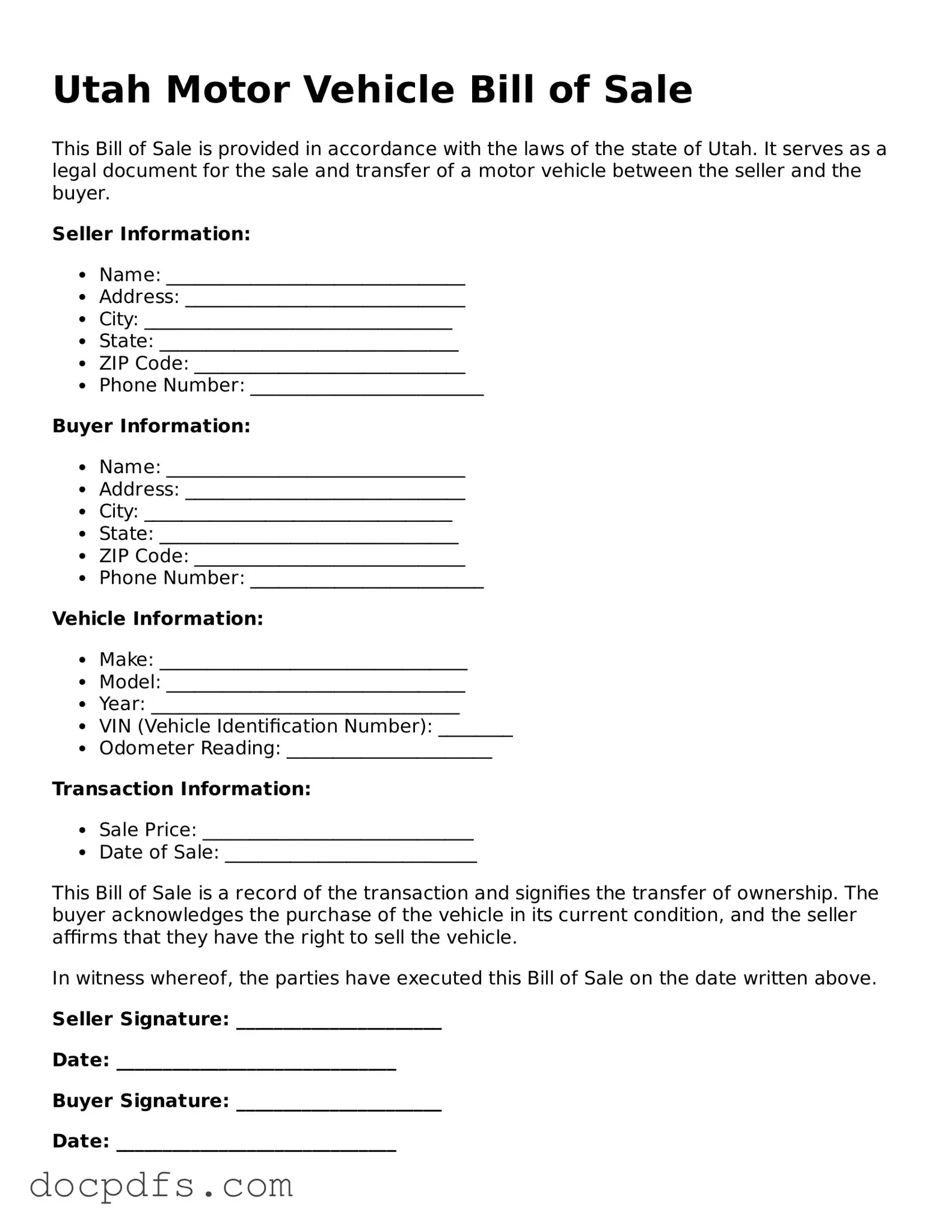Free Utah Motor Vehicle Bill of Sale Form
The Utah Motor Vehicle Bill of Sale form is a legal document that records the transfer of ownership of a motor vehicle from one party to another. This form includes essential details such as the vehicle's identification number, make, model, and the names of both the buyer and seller. Proper completion of this document is crucial for ensuring a smooth transaction and for future registration purposes.
Open Motor Vehicle Bill of Sale Editor Now
